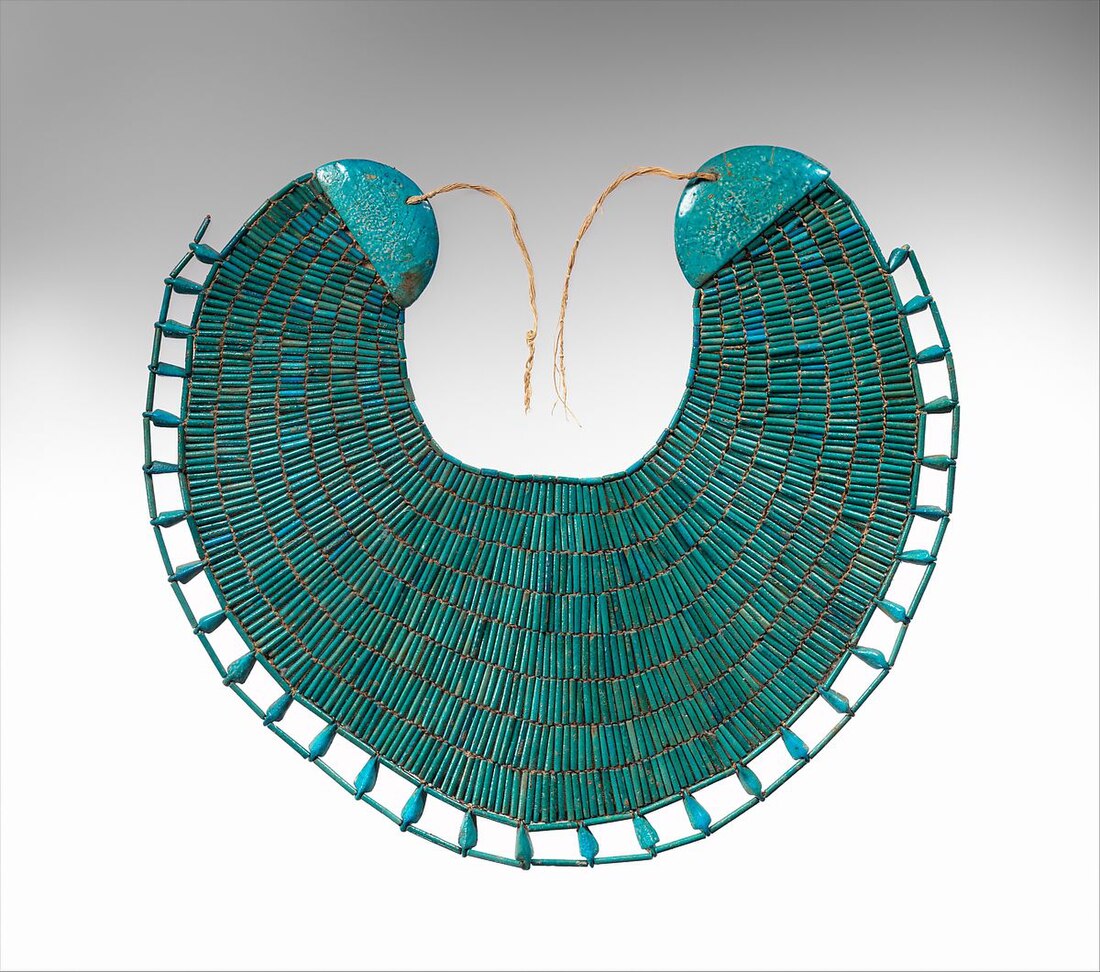Top Qs
Timeline
Chat
Perspective
Usekh collar
Ancient Egyptian neck ornament From Wikipedia, the free encyclopedia
Remove ads
The Usekh or Wesekh was a type of broad collar necklace from ancient Egypt. It was made from tubular and/or teardrop-shaped beads arranged in curved rows with terminals and sometimes a counterweight.[1] Deities as well as both women and men were depicted wearing this piece of jewelry in as early as the Old Kingdom (c. 2670–2195 BC).[1]


Remove ads
Etymology
The ancient Egyptian word wsḫ can mean "breadth" or "width" so this adornment is often referred to as the broad collar.[2]
Construction

The usekh collar was laid on top of the shoulders and around the neck and was fastened in the back. It was typically made out of faience, glass, stone, or metal beads, which could be in many different colors, and were strung together with linen thread.[1] Construction of the usekh is depicted in a few ancient Egyptian tombs.[citation needed]
Over time, the usekh went through many different variations of form.[citation needed] These could be attributed to shifting mythological perspectives, or perhaps due to geographical movement across Egypt.[citation needed]
Remove ads
Deities
A scene in the Fourth Dynasty tomb of Wepemnofret at Giza connects the usekh collar with dwarfs and the deity Ptah. Bernd Scheel has argued that Ptah, who is sometimes depicted wearing the broad collar, protects the deceased through the collar and that dwarves had access to that protective magic, because of their work making these types of collars.[3] In the Fifth Dynasty tomb chapel of Akhethotep (originally located at the Saqqara burial ground, but now in the Louvre), one scene distinguishes between two types of collars: the broad collar and the šnw or "encircling" collar.[4]
Gallery
- Broad Collar, c. 1336–1327 BC, c. 1327–1323 BC, or c.1323–1295 BC; faience; Brooklyn Museum
- Broad Collar, c. 1353–1336 BC, faience, Metropolitan Museum of Art
- Broad Collar of Nefer Amulets from the Tomb of the Three Foreign Wives of Thutmose III, c. 1504–1450 BC, gold, glass, Egyptian blue, Metropolitan Museum of Art.
- Broad Collar, 1479–1425 B.C; gold, carnelian, obsidian, glass; Metropolitan Museum of Art
- Broad Collar Terminal; Metropolitain Museum of Art
Remove ads
See also
References
External links
Wikiwand - on
Seamless Wikipedia browsing. On steroids.
Remove ads






